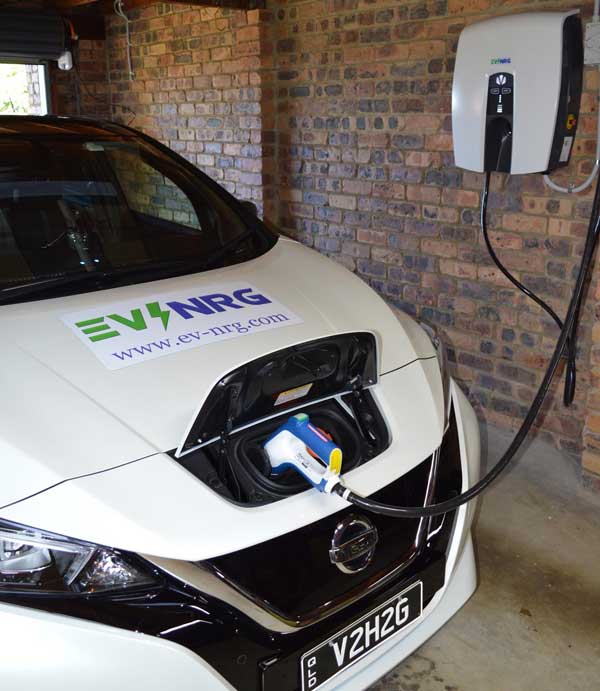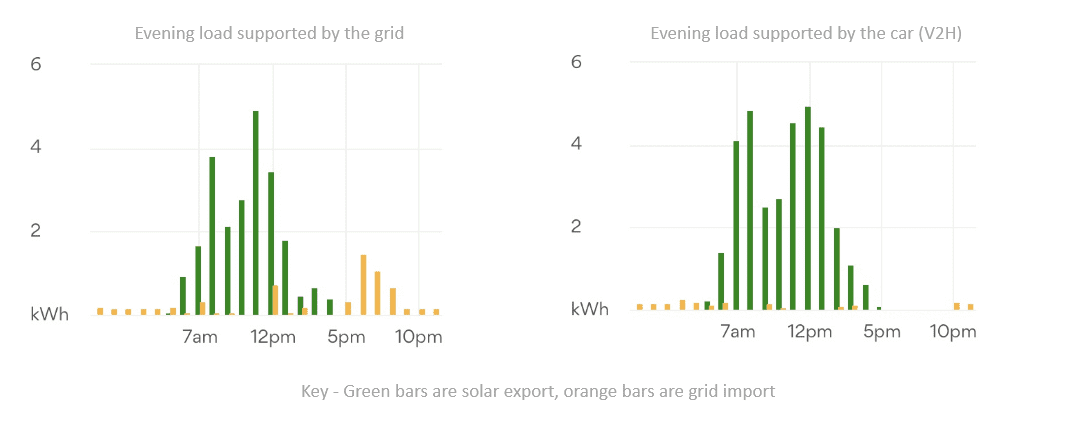Australian-owned company EV-NRG has launched what is thought to be the first locally available domestic vehicle-to-grid (V2G) charger, that has the ability to both charge an electric car as well as discharge energy back to the grid.
The Indra V2G “smarter charger” has been in use in the UK since 2018, charging and discharging at a maximum rate of 6kW.
Under a partnership with Indra Renewable Technologies, EV-NRG will make the V2G charger available in Australia for just under $10,000.
It will work with any electric vehicle fitted with the CHAdeMO charge plug (which essentially means the Nissan Leaf and late model Mitsubishi Outlander PHEVs in Australia).
EV-NRG CEO and founder Paul Hewitt says the decision to partner with Indra was made easy by the V2G charger’s solid history of use in the 300+ V2G charger Project Scirius that was undertaken in the UK with a grant from Innovate UK.
“We had many exploratory discussions with potential partners across the globe, before confirming and finalising the Technical Partnership with Indra Renewable Technologies; a UK based company that has been at the forefront of V2G and Smart charging,” Hewitt tells The Driven.
“Whilst we have only just released details about our agreement with Indra and the availability of the V2G charger, we have actually had this in place for some time and have had a V2G unit installed and in testing for a number of months.”

Hewitt says the high anticipation of the potential for vehicle-to-grid and vehicle-to-home (V2H) in Australia led EV-NRG to explore the benefits that releasing the charger could have for the Australian market.
The Indra V2G charger can be controlled via a Kaluza smartphone app which Hewitt – father of Tritium sales director Christian Hewitt – says will be further enhanced with features for the Australian market.
It can regulate charging and discharging of power based on information received from the electric vehicle, and from a suite of sensors designed to monitor grid supply and house loads.
“Alternatively in V2H mode, the charger continually monitors the energy demands of the house (or building) and will support these demands up to the 6kW using the stored energy within the vehicle battery,” EV-NEG said in a release about the new charger.
In a house where solar exports exceed the local grid export limit, V2H can assist the householder by absorbing extra energy and also save on energy import costs.
“In situations where the house load exceeds the 6kW limit, the charger offers “peak shaving” abilities, where an otherwise double digit load (e.g 10kW) can be reduced to something significantly lower (e.g 4kW) using the vehicle’s battery.”
According to EV-NRG, using the charger in V2H mode with an bidirectional-enabled EV could save the householder up to $360 a year in energy costs (based on the graphs below).

“Alternatively, in a situation where the house load is 4kW, the V2G charger will deliver up to 4kW, and no power will be exported to the grid. In this respect, the V2G charger will always try to maximise a households self-consumption of renewable energy and minimise the energy purchased from the grid,” says EV-NRG.
A brochure released by the company shows specifications for the charger including the fact that it has been certified. Hewitt says that EV-NRG and Indra has completed the necessary Australian compliance assessments (including AS4777) and it is classified under under Electrical Regulatory Authorities Council’s level 1 equipment class.
While there are several V2G trials still underway in Australia, EV-NRG says that, “the immediate availability of this proven technology means that V2G & V2H enthusiasts now have access to the right hardware to manage their own “energy hubs.”

Bridie Schmidt is associate editor for The Driven, sister site of Renew Economy. She has been writing about electric vehicles since 2018, and has a keen interest in the role that zero-emissions transport has to play in sustainability. She has participated in podcasts such as Download This Show with Marc Fennell and Shirtloads of Science with Karl Kruszelnicki and is co-organiser of the Northern Rivers Electric Vehicle Forum. Bridie also owns a Tesla Model Y and has it available for hire on evee.com.au.

